Although not as popular in the pet trade as its larger cousin, the tiger salamander (A. tigrinum), the spotted salamander is an equally impressive animal
I can still remember the discovery of my first spotted salamander. It was 1977, during a chilly, late-March morning on Cape Cod in Massachusetts. I was 11 years old and turning over old timbers in my yard while building a fort with my younger sister, Stacey. I rolled a large log that was partially buried beneath some damp sand, and there it was: a robust, female spotted salamander—the first I had encountered outside of a book, and living right in my own backyard!
I gathered up that black-and-bright-yellow-spotted beauty and immediately after showing it off to my parents, went back outside in search of more. I found a couple of enormous Fowler’s toads back in the yard, but no more salamanders.
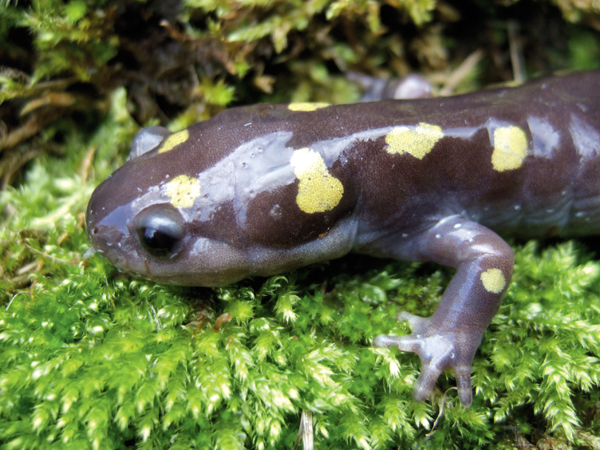
leo spinner
An adult length of up to 10 inches is possible for adult spotted salamanders.
Later that day I placed the salamander in a shallow, plastic tub of water and decided to leave it on our back deck for the night. I woke the following morning, and before heading off to school, I was dismayed to find my salamander frozen in the middle of a block of ice—the frigid night was something I hadn’t considered before leaving it out in the tub of water the night before.
Little did I know, however, that my mind would be blown when I returned home from school later that day. During the day the weather had warmed up, and when I arrived home after school, I found that the block of ice containing my frozen salamander had melted, and the salamander itself was swimming in the tub, alive and well!
This event was a defining moment in my development as an aspiring herpetologist, and it would forever set the course for my future in herpetological research. I made it a goal to learn as much as I could about the spotted salamander, and I searched vigilantly through my dad’s old herpetology and natural history books (all of which I still use to this day) to find anything I could about this impressive species.
Habits & Range
A denizen of both coniferous and deciduous North American forests, the spotted salamander (Ambystoma maculatum) belongs to a group of subterranean amphibians known as the mole salamanders, a title bestowed upon them due to their natural inclination to avoid the surface world and seek an existence beneath the soil and forest leaf litter. It is there that the spotted salamander stays cool and moist during the heat of summer while seeking out its primary food source of invertebrate prey items, such as earthworms, beetle larvae and other soft-bodied organisms.
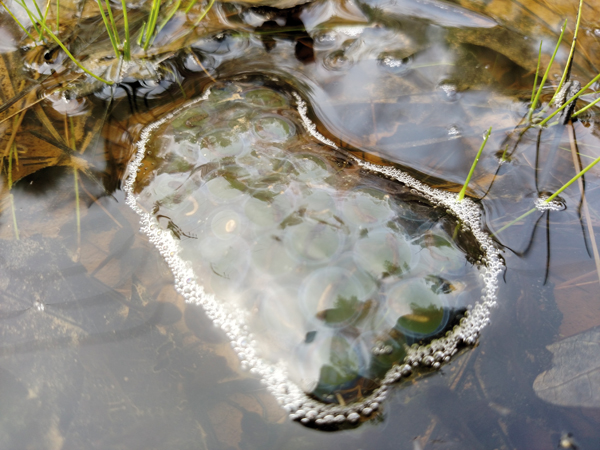
leo spinner
A mass of developing spotted salamander eggs.
Although the spotted salamander, with its clawless digits and smooth skin, isn’t a burrowing powerhouse, it does ably navigate the forest floor via small burrows and tunnels created by mammals such as moles, voles and shrews.
Within the spotted salamander’s natural range of southern Canada, south to Georgia and west to east Texas, its preferred woodland habitat includes dense shade and heavy leaf litter, as well as a seasonal water source such as vernal pools and swamplands or mitigated wetlands, including cranberry bogs that, under ideal circumstances, would abut the forest edge.
Spotted salamanders rely on shallow pools of water for reproduction, and they rarely enter large bodies of water such as lakes or ponds when smaller water sources are available. This may likely be due to the presence of predators in lakes, etc., and the fact that the salamanders are more apt to engage in breeding activity when confined to a smaller area.
Description and Taxonomy
A large and stocky salamander that sometimes reaches lengths of nearly 10 inches (but typically a few inches smaller), the spotted salamander is difficult at best to misidentify. It’s a shiny black animal with neon-yellow spots (often orange on the head of southern specimens) typically aligned in two rows and running the length of the body. Some individuals may have extensive blue speckling on the slate gray ventral surface and sometimes along the 12 costal grooves on either side of the body. Some spotted salamanders may be nearly spotless, others may be hypomelanistic, and still others are completely black or melanistic. Albino spotted salamanders are known to occur, as well.
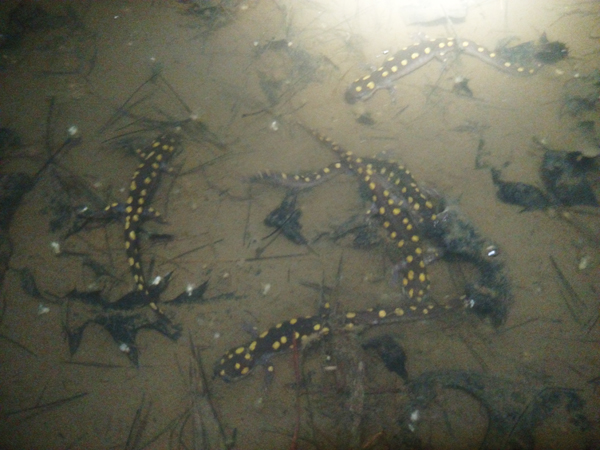
leo spinner
Female spotted salamanders in a vernal pool collect sperm packets (the white objects) left behind by males.
There are obvious cranial pores that may exude a noxious substance when a spotted salamander is under extreme duress. It has been suggested that spotted salamanders may use this excretion as a defense against predators; however, it is also released when an animal is being adversely affected by its surroundings, such as when coming into contact with harmful chemicals. Spotted salamanders that have been recovered from swimming pools with active levels of chlorine typically have a sticky feel to them as a result of their cranial excretions. This substance is different than the familiar soft, slimy secretion of a spotted salamander’s skin. To the touch, it is reminiscent of pine tree resin.
A muscular, laterally compressed tail helps with locomotion when a salamander is submerged in water.
Although frequent taxonomical revisions are still commonplace, they are not nearly as confusing and questionable as the nomenclature of the past often was. The spotted salamander, when originally described by George Shaw in 1802, was referred to as Lacerta maculata. Later, in 1838, this was changed to Ambystoma maculatum by Johann Jakob Von Tschudi.
Eventually, the name was recognized within the scientific community as a literary mistake. Tschudi, in making reference to the spotted salamander’s short head and mouth, mistakenly replaced ambly (the correct Greek prefix for short) with amby, combining it with stoma (meaning mouth) and thus naming the spotted salamander Ambystoma maculatum and not Amblystoma maculatum. As the Law of Priority states, however, the first name published in print stands, and thus Ambystoma maculatum has stood.
Spotted Salamanders as Pets
Considering its notable adult size, the spotted salamander requires little space to be kept successfully. Although as a general rule I prefer to provide more space to captive herps than less, one adult spotted salamander per 5 gallons of aquarium size will suffice. Throughout much of the year, spotted salamanders are inactive, often dwelling beneath the surface of their enclosure’s substrate in a single location until the tank is saturated with water, stimulating the inhabitants to emerge and search for food.
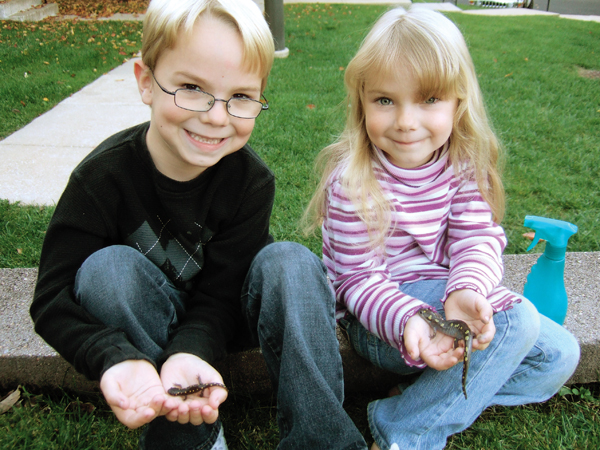
leo spinner
If you must handle your salamander at all, be sure to thoroughly wash and rinse your hands before and after contact. They should be wet and cool before handling the salamander.
A substrate for your spotted salamander should consist of moisture-retaining mulch, such as the shredded pine bark mulch thast is often available at home improvement and garden centers. Pine bark mulch is acidic and reduces the risk of harmful bacteria and fungus growth. Several inches should be placed in your salamander’s enclosure to ensure your pet will be able to burrow. It will dig deeper as the mulch on the surface begins to dry.
Salamanders that are kept active year-round need moist, not wet, bark mulch at all times. If they are being wintered over and cooled down, the mulch can be allowed to dry completely as long as the moisture is quickly replenished soon after it has dried. Smaller salamanders do not seem to have the ability to withstand the mulch complete drying out, so it is best to always keep it somewhat damp when being used with juveniles, to prevent dessication.
Spotted salamanders require very little light and no full-spectrum lighting. These nocturnal, burrowing animals do not benefit from the artificial full-spectrum lights used with many pet herp species. Inexpensive, non-heat-emitting fluorescent bulbs are fine for them.
Spotted salamanders are temperature-sensitive animals and should be kept cool at temperatures between 50 and 70 degrees Fahrenheit during their active periods. They can be wintered successfully at temperatures between 45 and 50 degrees.
Food and Water
Because they are rather inactive and kept at cooler temperatures, spotted salamanders do well with very little food. I have heard of specimens kept at the cooler end of the recommended temperature range that went as long as eight months without feeding with no noticeable negative effects.
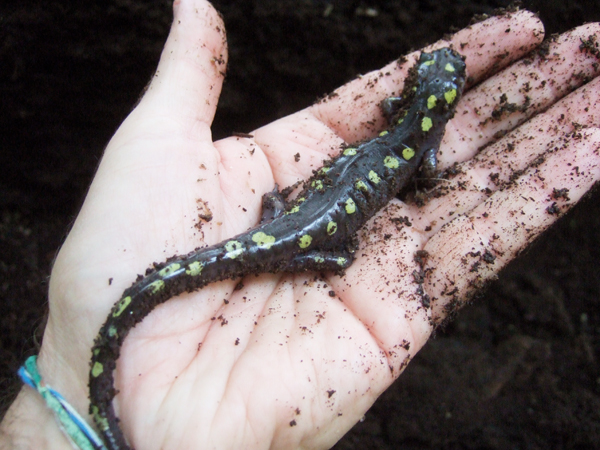
leo spinner
Spotted salamanders, like most species of salamander, do not do well with much handling. In fact, the soft, porous skin of a spotted salamander makes the animal vulnerable to bacteria, salt and heat from your hands.
During active periods, spotted salamanders can be maintained on a steady diet of soft-bodied invertebrates such as earthworms, crickets, wax worms and grubs. Adults will also benefit from an occasional pinky mouse.
Care should be taken to avoid offering hard-bodied larvae such as mealworms, as these have been known to eat their way back out of spotted salamanders (!), and the hard chitin that makes up the shell can be difficult to digest in salamanders that are kept cool. Always remove uneaten prey items, as hungry invertebrates can actually end up preying upon an unsuspecting salamander!
A water bowl is not necessary and will likely never be used by a spotted salamander. Water is taken in through its skin, directly from the substrate. The soft layer of slime over the salamander’s body helps to prevent desiccation. Mist the substrate using non-chlorinated water or spring water. Normal tap water can be used, but de-chlorinate it by leaving it open to the air for a couple of hours before using it with your animals.
Spotted salamanders should never be kept in a permanently wet environment as this can lead to stress and complications of the skin, such as blisters and ulcers.
Spotted Salamander Reproduction
Spotted salamanders in nature are famous for their late-winter pilgrimages across the forest floor, and sometimes busy roadways, in an effort to reach temporary bodies of water in order to breed. This annual migration of sorts usually takes place at the onset of heavy rains and relatively warm temperatures. Unfortunately, the salamanders are often greeted by predators such as raccoons, bullfrogs and snapping turtles.
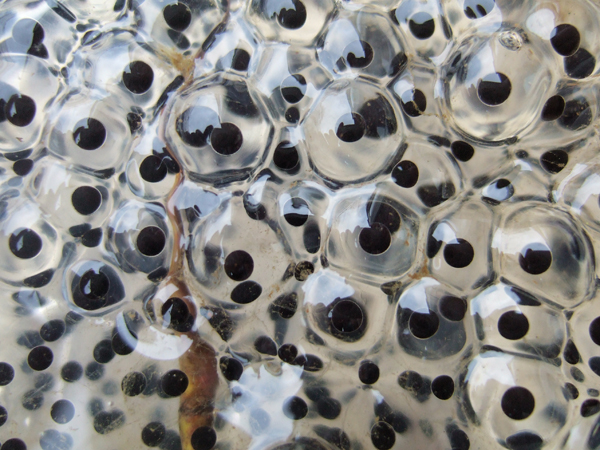
leo spinner
It usually takes about 30 to 60 days for spotted salamander larvae to emerge from their eggs.
A couple of days of heavy rain with temperatures ranging in the mid-40s will usually bring wild spotted salamanders to the surface after dark to make their journey. Males arrive in vernal pools, swamps and large puddles early to deposit cone-shaped sperm packets (spermatophores) into the water. Females arrive a little bit later to pick up the sperm packets with their swollen cloacal lips, in an effort to fertilize their eggs. During this time, things often heat up, with male salamanders nudging females toward the sperm packets in a semi-nuptial dance.
When first released, spotted salamander eggs are encased in a sticky paste, which helps them to adhere to underwater objects such as branches and pond plants. The egg medium quickly absorbs water and soon becomes a blob of transparent jelly and containing upward of 100 to 200 eggs. Later, as the embryos develop, a beneficial green algae may form, providing the developing salamanders with oxygen while at the same time benefiting from the carbon dioxide that the salamanders release.
Spotted salamander larvae usually emerge after 30 to 60 days and feed upon algae and mosquito larvae. Depending on environmental conditions, most will morph into a small terrestrial salamander after 14 to 20 weeks, measuring about 2 inches in length. They will develop yellow spots soon after emerging. Neonates make their way to the forest and will one day return to the same waters from which they emerged to continue their own reproductive cycle.
Captive breeding of spotted salamanders is possible, although it isn’t done often. It is relatively easy to condition captive salamanders for breeding indoors, but getting them to follow through with sperm depositing and egg laying indoors is another thing. Successful breeding of spotted salamanders is best done outdoors within the natural range of the species. Nature will take care of all the difficulties as long as you provide a safe and proper outdoor environment for your salamanders.
An outdoor enclosure built of railroad timbers or concrete measuring 8 by 12 feet would be adequate. The soil inside should be loose and chemical free, with several inches of leaf litter on top to help insulate the ground below.
The enclosure should be exposed to early-morning or late-afternoon sunlight only, and protected from heat during the day. A shallow pool approximately 4 feet in diameter will be necessary for breeding, and this can be built into the soil using an inexpensive rubber pond liner (readily available at most home and garden centers). The water should be several inches deep at its center and include plant debris and sticks. Don’t include any type of fish in any pond in which you hope to breed spotted salamanders.
Baby spotted salamanders should be cared for the same as the adults. House them separately from adults, as well, to prevent cannibalism.
Spotted salamanders are very docile—I’ve never known one to bite or defecate during handling, and rarely, if ever, do captives emit their noxious secretion during gentle contact with their keepers. However, it is very important that adults monitor small children if they are handling a spotted salamander because these amphibians can move quickly in short bursts, and they can be injured or killed when dropped. Proper hygiene must also be considered when it comes to small children handling animals.
Although not as popular in the pet trade as its larger cousin, the tiger salamander (A. tigrinum), the spotted salamander is an equally impressive animal that can provide keepers with many years of enjoyment. Look to your local Fisheries and Wildlife office for information regarding the status of spotted salamanders in your state before you collect or purchase specimens, as they may be prohibited or require a permit to possess. Otherwise, be sure to have their captive environment set up and prepared for your new pet before you bring it home.
Leo Spinner divides his time between Cape Cod, Massachusetts and southeastern Pennsylvania. He has studied amphibians, reptiles and invertebrates for more than four decades and is the founder and owner of Skin & Scales as well as The Spotted Turtle Herpetological Institute.


